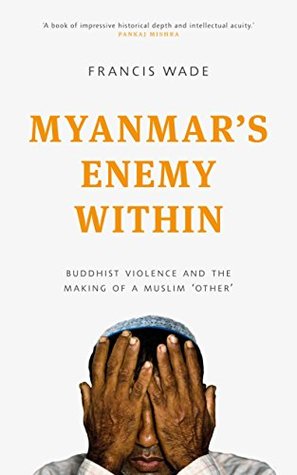More on this book
Kindle Notes & Highlights
by
Francis Wade
Read between
February 14 - March 8, 2019
The stirrings of democratic change in Myanmar might level the playing field, allowing communities who felt long disenfranchised by the military to assert greater claims to the nation. These particular Muslims might take advantage of this, and if they did, Buddhists would suffer, as they had elsewhere in the world – in Malaysia, in Indonesia – where Islam had taken root.
rape is the act that, perhaps above all else, signals a bid for conquest of one group by another, and this interpretation would become a driving force in the mayhem that followed.
The military that took power in 1962, ending the brief spell of parliamentary democracy that the country enjoyed following independence in 1948, had used these fears of the demise of Buddhism and the break up of the nation as a principal tool in its efforts to cultivate loyalty among a resentful population. It knew how to manufacture communal violence that appeared, from a distance, spontaneous, and that warranted the presence of the military as protector of the nation. Perhaps this needed to be factored into understandings of what unfolded after 2012.
Such a close fusion of religion and national identity has two broad effects: it provides a sense of unity and security in times of war and conquest and lends a moral justness to the defence of borders, but it also narrows the spectrum of identities that people can express and still rightly claim membership of the nation.
“The Earth will not swallow a race to extinction but another race will.” It had become the slogan of the Ministry of Immigration during the long years of military rule, when the country retreated inwards, walling itself off from the outside world.
“foreigners who have filtered into the country illegally.”
residents of Maungdaw and Buthidaung, where Rohingya are predominant, were forced to share two doctors between 158,000 people.
With Rohingya and Rakhine no longer interacting, there was no countervailing information to correct them.
Soon after dawn that morning, mobs of Rakhine armed with spears, machetes and Molotov cocktails gathered outside the village. Witnesses later told how riot police had disarmed the Rohingya villagers as the mobs approached.13
According to a number of the villagers that were able to escape and later met with investigators, police then opened fire on the Rohingya that remained.14
But the veil that dictatorial rule casts over a country often obscures nuance.
There is often a tendency to associate xenophobic sentiment with a far right mentality, but that didn’t seem to hold true for Myanmar in those years.
“But don’t forget that violence has been committed by both sides,” she continued. “This is why I prefer not to take sides. And, also I want to work toward reconciliation between these two communities. I am not going to be able to do that if I take sides.”3 By that point 115,000 people were living in refugee camps, the vast majority Rohingya.
The “Protection of Race and Religion Laws,” as they came to be known, criminalised polygamy and required those who wished to convert to another religion to seek official permission beforehand.
He seemed to be suggesting there was an on–off switch available to Buddhists; that for the time taken to commit an act that violated the sanctity of their belief, they could step outside of their faith. It was in stark contrast to narratives of violence committed by Muslims, which were underpinned by a sense that theirs was an inborn evil, a constant – something core to their very being, and thus ineradicable.
Just as Islam is so often associated with violence, Buddhism has been stereotyped as its polar opposite, and so we profess shock at the fiery language of the monks and the actions of their followers. That shock
isn’t matched when we learn of similar acts being carried out by Muslims, and it spotlights a habit of which we are regularly guilty: that of essentialising the belief systems and cultures of faraway places, and bracketing people into static units of analysis to which we pin select attributes – good or bad.
Their statelessness gives them no recourse to legal action because they exist outside of the law, and all that it entitles. But that culture of forced submission bleeds into everyday interaction with figures of authority, whether legal or not, creating a culture that denies them any voice to challenge decisions that affect them.
The memories of the attack still haunted her, and travel to Sittwe to see a doctor was impossible. Only one person from the village now went into town to buy goods, a girl in her early twenties who could pass herself off as Rakhine.
It was clear from this and other developments that the violence of 2012 hadn’t been strictly ethnic in nature – it was also both religious and racial, for a different appearance meant a different origin, and thus a different nature of being.
Access to the most basic of rights was determined solely on the basis of religion.
and the government, the supposed guardian of a populace, shared that view as much as the extremists on the ground that helped to enforce it.
Rakhine and Rohingya consider the other as privileged – Rakhine as superior in the hierarchy of status in Myanmar; Rohingya as the beneficiaries of international sympathy and support. Neither sees the other as a victim of the military, and so the history of shared suffering is obscured.


